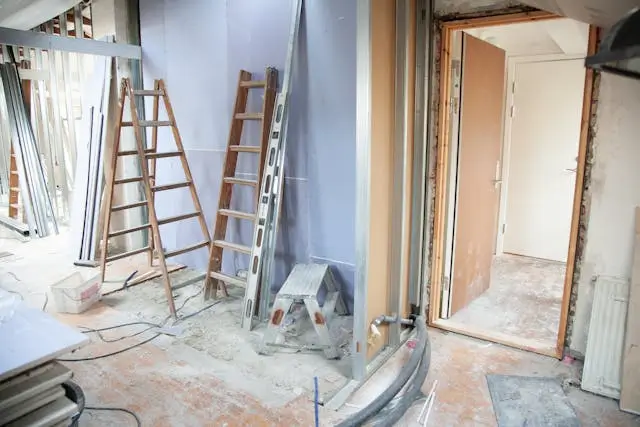Have you ever considered turning old, discarded pallets into effective insulation for your shed? By selecting sturdy oak pallets, you’re recycling and ensuring better thermal retention within the structure. Start by aligning pallets of equal size to create a uniform frame, simplifying construction and enhancing the overall strength of your shed.
As you bolt these pallets together and fill the gaps with sustainable materials like recycled denim, you’re stepping closer to an eco-friendly, insulated space.
But how do you manage the trickier aspects, like ensuring the structure is weather-resistant and properly sealed? Let’s explore key strategies to maximize insulation while maintaining a robust build.
Gathering Suitable Pallets
Start by scoping out discarded oak pallets, which offer superior insulation and are often free. Ensure they’re in good condition for robust support. Seek pallets of the same size to simplify your build. Remember, the structural integrity of these pallets is essential for a sturdy shed. If you are looking for some of the best-recycled pallets, Gaylord Box verdetrader is the place to go.
Preparing Shed Foundation
Before building, elevate your shed slightly off the ground using concrete blocks or gravel to prevent moisture buildup and establish a stable, durable foundation.
Choose eco-friendly building materials like treated lumber for longevity.
Using pallets smartly in your design not only recycles but also enhances the efficiency of your space, creating a snug, sustainable haven where you and your ideas can flourish.
Constructing Pallet Frame
To construct a sturdy pallet frame for your shed, first anchor 4x4s into the ground, ensuring resilience and longevity.
Elevate the sturdy pallets on concrete blocks to avoid moisture.
This secures your shed and champions sustainability and practical innovation in your building efforts.
Securing Pallet Walls
Now that you’ve constructed the frame for your shed, it’s time to focus on efficiently securing the pallet walls.
Choosing Suitable Pallets
Select robust and untreated pallets to guarantee the strength and freedom from harmful chemicals of your shed’s walls.
When using recycled pallets, keep these tips in mind:
- Examine each pallet for any broken or weak boards.
- Choose pallets of similar sizes for uniformity.
- Secure each section with large, sturdy bolts for lasting durability.
Installation Techniques
After securing your ideal pallets, let’s focus on how you’ll attach these walls to guarantee your shed stands strong and sustainable.
You’ll bolt the pallets together, creating sturdy sections. Place them on elevated concrete blocks, ensuring they’re off the damp ground.
Enhancing Stability
To enhance your shed’s durability, secure the pallet walls to the frame using large carriage bolts, guaranteeing they’re tightly joined to prevent movement. Keep in mind:
- Elevate walls on concrete blocks to fend off moisture.
- Inspect each pallet for weak spots before adding the external installation.
- Follow building codes and use appropriate hardware to secure a safe and strong structure.
This sort of external wall insulation costs less than most other types and is a cost effective way to keep heat in.
Installing Insulation Materials
When insulating your shed, start by stuffing the gaps in the pallet walls with sustainable materials like recycled denim or foam board. This step not only utilizes eco-friendly insulation materials but also transforms recycled pallets into a snug sanctuary.
Adding Doors and Windows
Incorporate doors crafted from recycled pallets to maintain your shed’s insulation while ensuring easy access.
- Install double-pane glass windows to boost insulation and let sunshine flood in.
- Use weather-stripping around windows and doors to seal off drafts, uniting efficiency with eco-friendliness.
- Strategically place windows to optimize natural light and cross-ventilation, enhancing your cozy, green retreat.
- Together, we’re building more than just a shed; we’re fostering a community.
Roof Installation Tips
As you prioritize sealing and insulating your shed’s doors and windows, don’t overlook the roof’s significance in maintaining a comfortable, energy-efficient space.
Make sure to attach the pallets together using screws for stability. Frame using sturdy materials, and fill any gaps with eco-friendly insulators like recycled denim.
Don’t overlook adding weatherproofing to safeguard your green haven from the elements.
Maintenance and Upkeep
To maintain your shed’s insulation effectiveness, you must regularly check for moisture that might compromise the integrity of your recycled pallets.
Regular Moisture Checks
Why not start regular moisture checks to safeguard your shed’s recycled pallet insulation from damage? Here’s what you need to do:
- Monitor: Use a moisture meter to check for moisture buildup.
- Ventilate: Guarantee proper ventilation to keep the air fresh and dry.
- Protect: Install a moisture barrier to shield against water seepage.
Pest Control Measures
Seal all gaps and cracks in your shed to keep pests out effectively. Regular inspections are key. Spot early signs like droppings or gnaw marks.
For an eco-friendly approach, sprinkle diatomaceous earth around your pallets using it as a barrier. Embrace essential oils as a natural deterrent.
Conclusion
Now that you’ve transformed recycled pallets into a cozy, insulated shed, you’re a savvy builder and a green innovator!
Imagine sipping hot cocoa in your upcycled haven as snow falls quietly outside. This project not only saves money but greatly reduces waste.
Keep checking for wear and make updates as needed to enjoy your eco-friendly retreat for years.
Here’s to making sustainable choices that warm both your heart and our planet!
